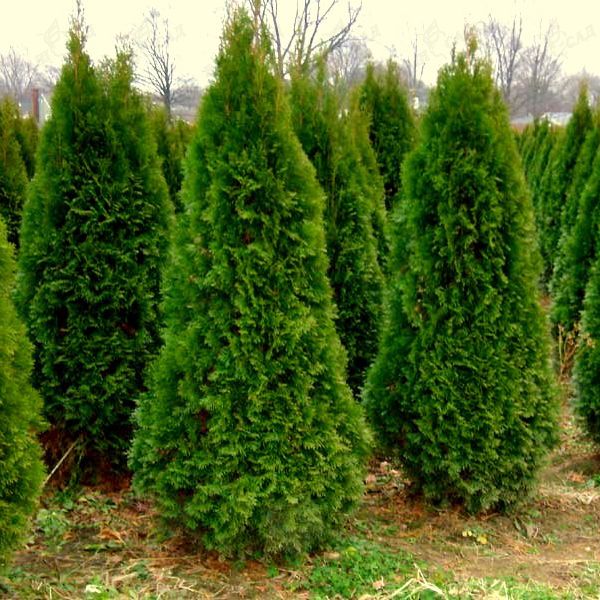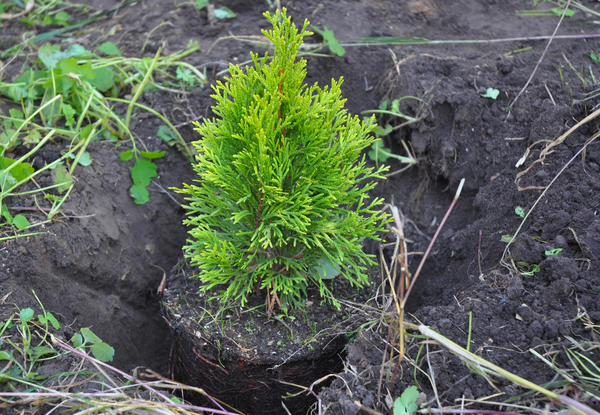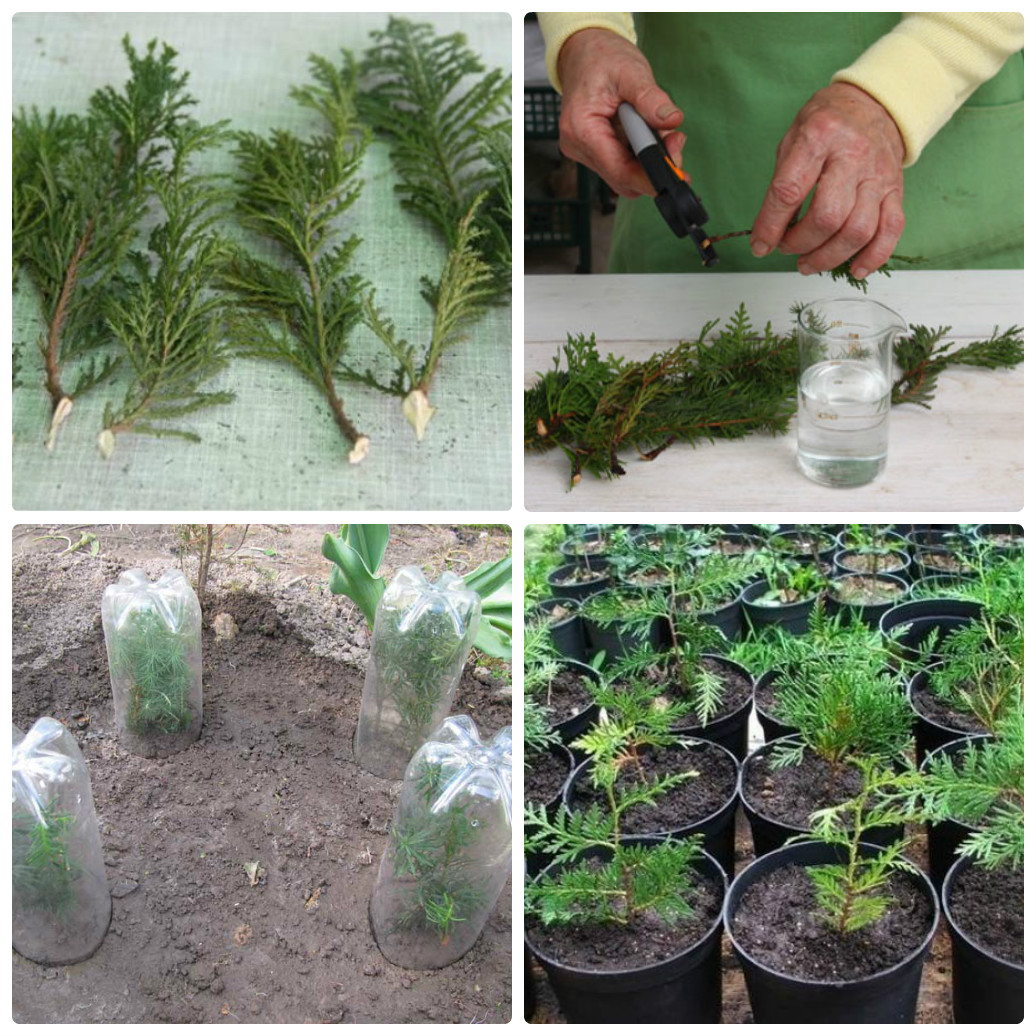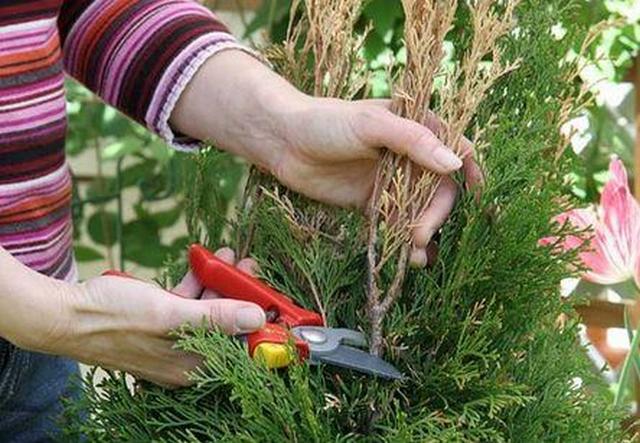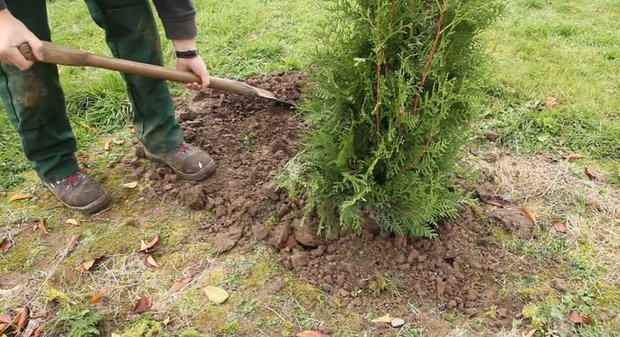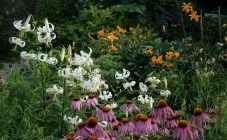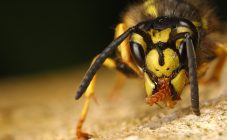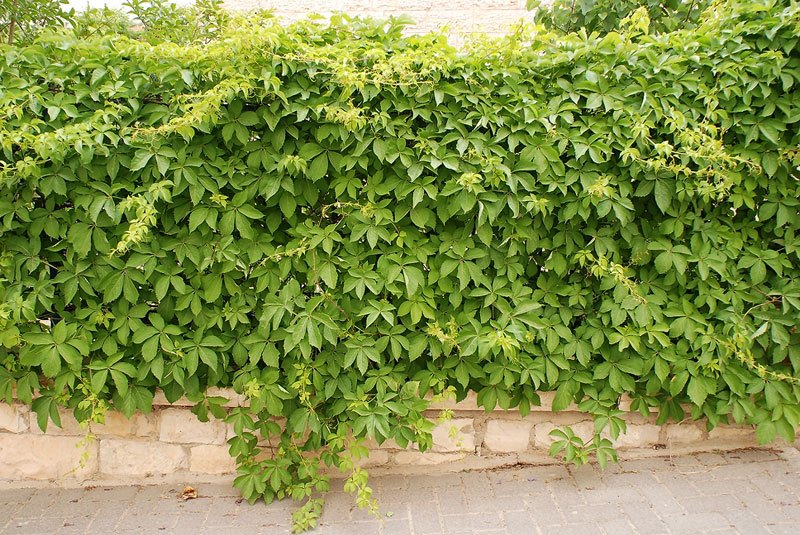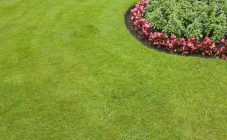Content:
Elegant fluffy thuja is a real decoration of many rock gardens, alleys, flower beds. This evergreen plant from the Cypress family cannot be confused with another tree. It has a compact pyramidal or oval crown, scaly small (0.2-0.4 cm) needles, the bark of the trunk and branches is gray-brown, which peels off over time.
The article will discuss what types of thuja are, what are their differences and features, as well as how to plant thuja on the site, and how to properly care for them.
Types of thuja, their differences
There are two main types of thuja:
- Western;
- Eastern.
They differ in the following external features:
- The western thuja tree is single-stemmed. The branches are turned from the trunk in different directions, which makes the plant look lush and "curly".
- In the flattened branch, the branches branch, thereby forming several trunks. The branches are flat in shape and resemble plates.
In addition to appearance, western and eastern thuja have their own characteristics in growing:
- Thuja western was brought to Europe from the USA and Canada. This species is hardy and frost-resistant, can be grown in the country, in a personal plot. Cultivating it as a houseplant, most likely, will not work, since it requires a cold wintering.
- Thuja oriental (another name is oriental flatfish) is grown in countries such as China, Korea, Japan. The plant is considered a more thermophilic crop than the western species, so it is not practiced outdoors in areas with harsh climates. The tree is cultivated as a houseplant for home winter gardens.
Planting a plant in the country in open ground
Requirements for illumination and soil composition
It is not difficult to grow any type of thuja (western or eastern), given the following culture requirements for external conditions and soil:
- Illumination - for planting in areas with a warm climate, moderately illuminated areas are chosen, since at noon, when the sun's rays are especially hot, the plant needs a shade. In addition, the selected location should be quiet and calm. If the plant is to be planted in northern areas with short daylight hours, then the tree should be planted in open areas, protected from cold winds. Despite its shade tolerance, thuja must receive a certain amount of light to form a beautiful crown.
- Soil - since it is a coniferous tree, it requires fertile soil, consisting of turf, peat, humus, sand. If the site is sandy and unsuitable for thuja, it can be fertilized by introducing fertile soil, organic matter.
Landing
If the variety is selected and purchased, the planting sites are determined, at the next stage it is necessary to decide when it is best to plant thuja in the country.
Regardless of whether the seedling is in a special pot with soil, or its roots are open, spring is chosen as the time for planting, so that the plant has time to acclimate and root well during the season.
The planting of coniferous thujas begins with digging a hole for planting seedlings, its size depends on how large its root system is.
For the free arrangement of the spread roots of the plant, the width of the hole is usually dug 40-45 cm more, for deepening it is made more by 20-30 cm in the size of the rhizome. A small drainage layer of pebbles, expanded clay is laid at the bottom, then a soil mixture of turf, peat and sand is added.
Before finally covering the plant with earth, the neck of the seedling is placed at ground level, not higher or lower, otherwise the seedling may die. The land near the tree is well tamped, watered (water consumption is 10-15 liters), mulched with a layer of compost, pine bark, peat, this completes the planting of thuja.
Transplanting seedlings and soil preparation
If for most coniferous crops the transplant is destructive, then the thuja tolerates this procedure painlessly, the main thing is to do everything right.
They check in advance the soil for thuja when planting in a new place, how suitable it is for growing thuja, otherwise, the plant may not take root and dry out. At a distance of 50 cm from the trunk in a circle with a sharp shovel, the earth is bayonetted, after which the tree is pulled out with a lump of soil and moved to a new place. As a fertilizer, before planting thuja, ash, humus and compost are added to the pit.
A newly planted young plant is fed with a growth regulator, for example, "Epin". If the soil at the planting site is not fertile enough, then after a couple of weeks fertilizers containing potassium and phosphorus can be applied.
Proper care after transplant
Watering, loosening
In the first month, coniferous young trees require a lot of moisture to grow, so they are watered weekly, spending from 1 to 4 buckets of water, depending on the age of the seedling. After each watering, the soil near the plant to a depth of no more than 10 cm is slightly loosened, they do this carefully, since the plant roots are shallow and shallow.
Pruning
When the thuja begins to grow and form quickly, it usually happens by the age of 2-3 years, in the spring it is cut off. As a result, the crown acquires the desired shape, the rays penetrate to all the branches of the tree, it becomes more fluffy and luxurious. Usually, one pruning per season is enough, but for some species, formative pruning is carried out several times. To prevent damage to the tree, the following rule must be observed: do not remove more than 1/3 of the stem in one pruning.
Top dressing
Spring comes, and the thuja is not only cut off, but also fed with complex mineral fertilizer. If fertilizers were applied when planting a seedling, then it will need feeding only after 2 years.
Autumn is the time to prepare for the upcoming winter: thujas stop watering, feeding, they begin to cover tree crowns with burlap and spruce branches, tree trunks are covered with a thick flooring of peat.
Landing scheme on the site
The answer to the question of where and how beautifully to plant thuja on the site depends on the design idea, personal creativity.
Thuja are often used as a picturesque hedge to decorate the site. If the site is rectangular, then the seedlings are placed along the fences in such a way that, having matured, the trees do not interfere with each other. It is the size and shape of the crown of an adult thuja that determine at what distance neighboring plants should be located (usually from 1-1.5 m). But, if an alley of large columnar trees is planned on the site, then the distance when planting seedlings increases to 3.5-4.0 m.
Single plants look spectacular on stone slides, flower beds, for example, dwarf varieties in the form of fluffy balls, beautiful shrubs with spreading openwork branches. It is not easy to decide which thuja is better to plant in the country or a plot, at present there are too many beautiful varieties and varieties offered.
Diseases and pests
Such fungal diseases are especially dangerous for thuja:
- fusarium;
- brown shute;
- cytosporosis.
Control measures
Treatment against fungal diseases is carried out by spraying the plants with a solution of kartosid or Bordeaux liquid at a frequency of 2 times a month.
Such harmful insects as aphids, scale insects, ticks, bark beetles love to settle in thuja. To get rid of them, use drugs Rogor, Decis. June is the time for treating thuja with Aktellik, after a couple of weeks, spraying is repeated again.
Thuja is a tree with a beautiful crown and openwork branches, which can be admired all year round: both in hot summers and severe winters. In addition to the decorative role, many people believe in the mystical power of this evergreen tree - there is a sign that if you plant a thuja in a country house or plot, then evil spirits and uninvited guests will never appear on this territory.
